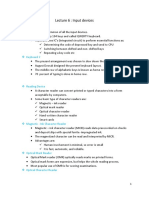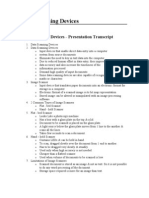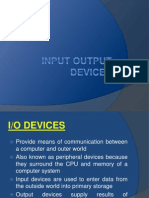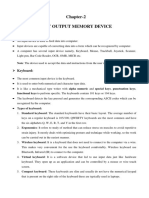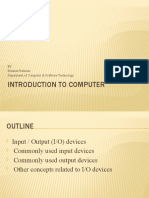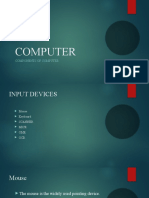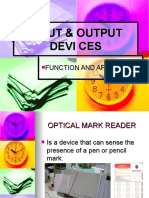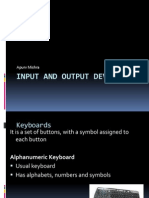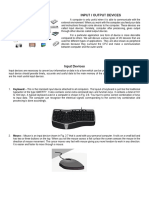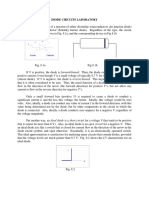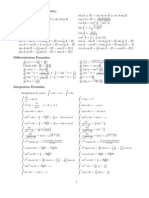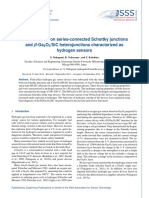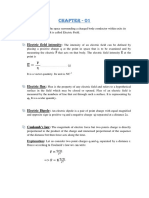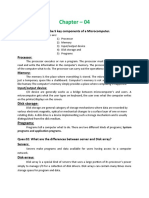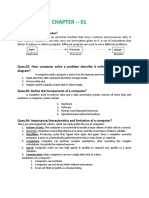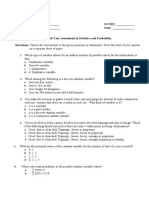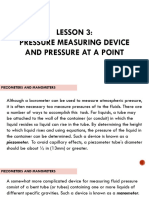0% found this document useful (0 votes)
62 views3 pagesInput Devices Overview & Comparison
Input devices include keyboards, MICR, OCR, OMR, mice, scanners, and barcode readers. A keyboard uses integrated circuits to determine key presses and send codes to the CPU. MICR is used widely in banking to read data on checks using ferrite-impregnated ink. OMR optically reads precisely printed forms for applications like exams. OCR converts documents to machine-readable text by comparing scanned patterns to character patterns. Barcode readers scan printed codes consisting of bars of different widths and spaces to identify products. Scanners allow converting images to codes for display and include sheet-fed, flatbed, and handheld types. Mice control screen cursor position using a box with buttons and balls that move
Uploaded by
Kawsar MobinCopyright
© © All Rights Reserved
We take content rights seriously. If you suspect this is your content, claim it here.
Available Formats
Download as DOCX, PDF, TXT or read online on Scribd
0% found this document useful (0 votes)
62 views3 pagesInput Devices Overview & Comparison
Input devices include keyboards, MICR, OCR, OMR, mice, scanners, and barcode readers. A keyboard uses integrated circuits to determine key presses and send codes to the CPU. MICR is used widely in banking to read data on checks using ferrite-impregnated ink. OMR optically reads precisely printed forms for applications like exams. OCR converts documents to machine-readable text by comparing scanned patterns to character patterns. Barcode readers scan printed codes consisting of bars of different widths and spaces to identify products. Scanners allow converting images to codes for display and include sheet-fed, flatbed, and handheld types. Mice control screen cursor position using a box with buttons and balls that move
Uploaded by
Kawsar MobinCopyright
© © All Rights Reserved
We take content rights seriously. If you suspect this is your content, claim it here.
Available Formats
Download as DOCX, PDF, TXT or read online on Scribd
/ 3

